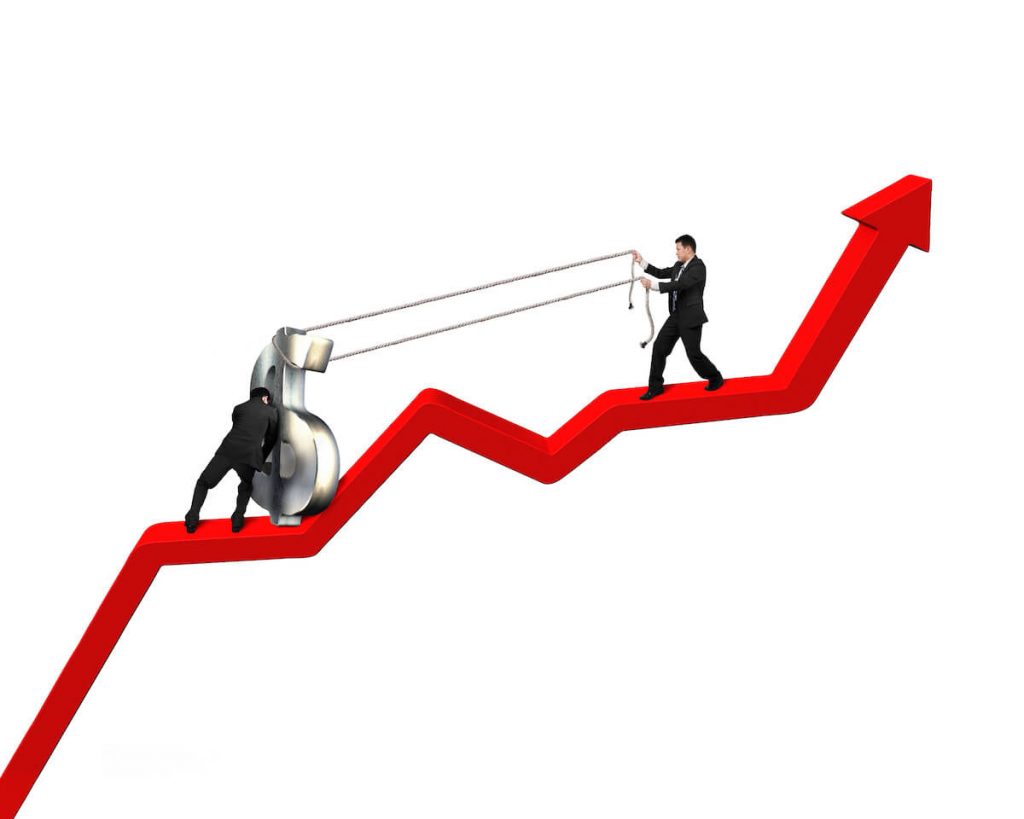
One thing every aspiring trader needs to understand is support and resistance indicators. These are part of what is known as “technical analysis” (TA), which is where we’ll begin this post. Once we’ve covered that ground, we’ll explore some applications of technical analysis before turning to a fuller discussion of support and resistance levels targeted at beginners.
A brief note on technical indicators: Whether or not support or resistance levels work, or if technical indicators themselves work, is often debated among practitioners and in academia. Having said that, if some people believe they work, it is important to know these concepts as other market participants will trade around this data. In this way, sometimes technical analysis is called a self-fulfilling prophecy, in other words because people believe it works, it may actually work.
What Is Technical Analysis for Beginners?

Support and resistance indicators are part of technical analysis, a term that refers to the practice of basing trade decisions on the statistical properties of stocks. To the uninitiated, the “price action” of a stock — the volatility of its price rises and price falls — might seem to be completely random. But in fact, if you know how to apply the right statistical models to these price movements, you can find patterns that’ll let you trade more effectively.
Among the simplest kind of technical indicators is the moving average, which is generally the average price of a stock over a certain timeframe. It’s known as a “moving” average because the window of time you’re examining shifts with each passing minute, hour, or day.
If you’re working with a 30-day or 200-day moving average in the foreign exchange (forex) market, for example, this value will be re-calculated every day.
You could use a metric like the moving average — or the slightly more complex exponential moving average (EMA), which gives additional weight to more recent data points — to apply a stop-loss order at a certain price point. Trading decisions like these are a core part of financial risk management.
And of course, no discussion of technical analysis targeted at beginners would be complete without a discussion of “candlesticks,” whose name derives from their resemblance to a common candle.
Candlesticks are a marvel of data communication, as they’ll tell you at a glance what the highest and lowest prices of a stock have been, along with the opening and end-of-day closing prices and whether it’s finishing the day up or down.
Though this is hardly even a survey of the full scope of technical analysis, it hopefully conveys enough of the flavor to inform our later discussion of support and resistance levels.
How Does Technical Analysis Inform Trading Strategies?

There are many ways that technical analysis can be used to develop trading strategies, a few of which we’ll discuss now.
One way a trader might leverage technical analysis is in attempting to identify a “breakout,” i.e., a situation in which a stock is moving above or below its recent moving average. Either could be a signal to investors that they’ve arrived at an exit point — a place to take profit or cut losses — depending on how they’ve positioned themselves in the market.
Finally, we’ll talk about scalping, which is an extremely short-term trading strategy that is used to profit off of tiny market movements in places like the forex market. This isn’t the sort of thing that is usually accomplished with fundamental analysis, so if you’re using scalping in your Forex trading, technical indicators are pretty much all you’ll have to go on, unless there is macro-moving market news.
Technical Analysis vs. Fundamental Analysis
Technical analysis and fundamental analysis are the two basic methods by which you can decide which stocks you want to buy and what trading ranges you’re comfortable operating in.
With technical indicators, you’re looking for things like resistance areas or levels of support that (theoretically) provide a roof and a ceiling on future price levels, pivot points that signal an uptrend or downtrend is underway, etc.
In essence, you’re drawing upon mathematical facts about price movements and price levels to make decisions.
With fundamental analysis, you’re diving into the foundations of the business. Rather than looking at the ticker tape for a company or exchange-traded funds (ETFs), you’ll examine the CEO and board of directors, the quality of its product, its total addressable market, and similar sorts of metrics.
While both involve math, company data, and analysis, they’re two very different approaches.
What Are Support and Resistance Indicators?

Support and resistance indicators are two of the more fundamental parts of technical analysis. Support is generally a price level below which a given stock almost never falls. Support levels are not written upon the stars; they come from the behavior of market participants.
Observers of ACME stock might note that its price falls to $7 per share but never any lower, and so start buying enthusiastically when they see it’s on a downtrend from $9 per share to $8 per share.
Support levels are often indicated as horizontal lines on a chart, connecting all the relevant price lows (though there are certainly more sophisticated ways of doing it).
The counterpart to support is resistance. Resistance is a price level above which a given stock almost never rises. Like support, resistance is driven by the beliefs of the people participating in the relevant market. A resistance level or resistance zone will materialize as traders become more interested in selling than buying or holding.
There are any number of reasons they may have this interest. They may believe that the stock is overbought or overvalued, for example, or their analysis of yield curves may have convinced them that a recession is on the horizon and they’d rather be in cash.
Resistance levels, too, are often drawn as horizontal lines on a chart, connecting all the relevant price highs (though there are certainly more sophisticated ways of doing it).
Taken together, support and resistance levels define a trading range for a stock, and you can think of them as constituting a kind of floor and ceiling. Traders will look for support and resistance indicators that help them define trend lines that, in turn, inform their perspective on where the stock will head in the future.
Be aware, however, that these are soft floors and ceilings. If news breaks that the company CEO is involved in a scandal, the stock’s price action might permanently move outside of its support and resistance levels.
Also, note that there can be different support and resistance levels for different timeframes. High-frequency traders using finance AI might be looking at hourly resistance lines, while longer-term investors could be using monthly or yearly values.
How Do I Trade Using Support?
Entire books can be (and have been) written about the subtleties of trading using levels of support, but we can use the ground we’ve already covered to work through a simple example.
Let’s go back to the fictional ACME corporation we talked about earlier. Assuming you’re a longer-term investor and not a day trader, you’d want to look at (minimum) a few months’ worth of ACME’s price action to identify a price level that it never seems to dip below. This is your level of support, and probably the simplest way to trade this information would be to wait until the stock winds its way toward this price point before putting in a buy order.
As we’ve noted throughout, however, there’s nothing sacred about a given level of support. You probably want to combine your support analysis with other technical indicators, and non-technical indicators to be confident you’re making the right decision.
How Do I Trade Using Resistance?
In the final analysis, resistance trading ends up looking a lot like support trading.
After you’ve spent some time examining the price action of ACME Corporation, you can identify a price level or a small set of price levels above which ACME’s stock never rises. This will be your resistance level or resistance zone, and probably the simplest way to utilize this information would be to wait until the stock begins ambling up toward this price point before placing a short order, on the premise that there will soon be a downward price reversal.
Alternatively, if you believe that a breakout is imminent, you could place a buy order in the vicinity of the resistance level in order to capture some of the new, expanded upside.
What Are Dynamic Support and Dynamic Resistance?
Earlier, we described support and resistance as being horizontal lines connecting the lowest of the price falls and the highest of the price rises, respectively.
This is a great way to begin thinking about it, but we all know that the markets tend to move around a lot — no single technical indicator is set in stone and immutable.
Dynamic support and dynamic resistance capture this fact. They are each more nimble than their horizontal-line counterparts and reflect changes in price action over time.
How Do Fibonacci Indicators Relate to Support and Resistance Indicators?

Fibonacci levels are a particular approach to identifying support and resistance levels. They’re incredibly cool and suitable for beginners, so we can’t possibly close this article out without a discussion of them.
As you may have guessed, Fibonacci levels are named for an Italian mathematician and are found throughout the natural world, but they’re thought to have been known as far back as classical India.
Fibonacci retracements are defined as certain percentages — 23.6%, 38.2%, 61.8%, and 78.6%. Prices will often correct by a “Fibonacci” number, dropping from, e.g., $12 down to $9.168 (which is a 23.6% decrease).
When used in conjunction with other technical indicators, this gives you a means by which to try to predict future price movements.
How Can I Get Experience With Trading?
There are many ways to gain experience as a beginning trader, such as creating a demo account with a service like TradingView. An important first step is to arm yourself with knowledge, such as the role that support and resistance indicators play in trading.
Whether you’re simply trying to learn how to calculate support and resistance indicators or craft a complex strategy, you’re only as good as the information you’re utilizing. Be sure you’re getting data from a source you can trust, like the Tiingo API. We have pre-cleaned and validated data on crypto, Forex, news, and so much more, which will give you what you need to trade with confidence.
Leave a Reply